The making of horror masterpiece Alien: Isolation: 'It was a giddy, exhausting, intense time'
The story behind Creative Assembly's modern classic.
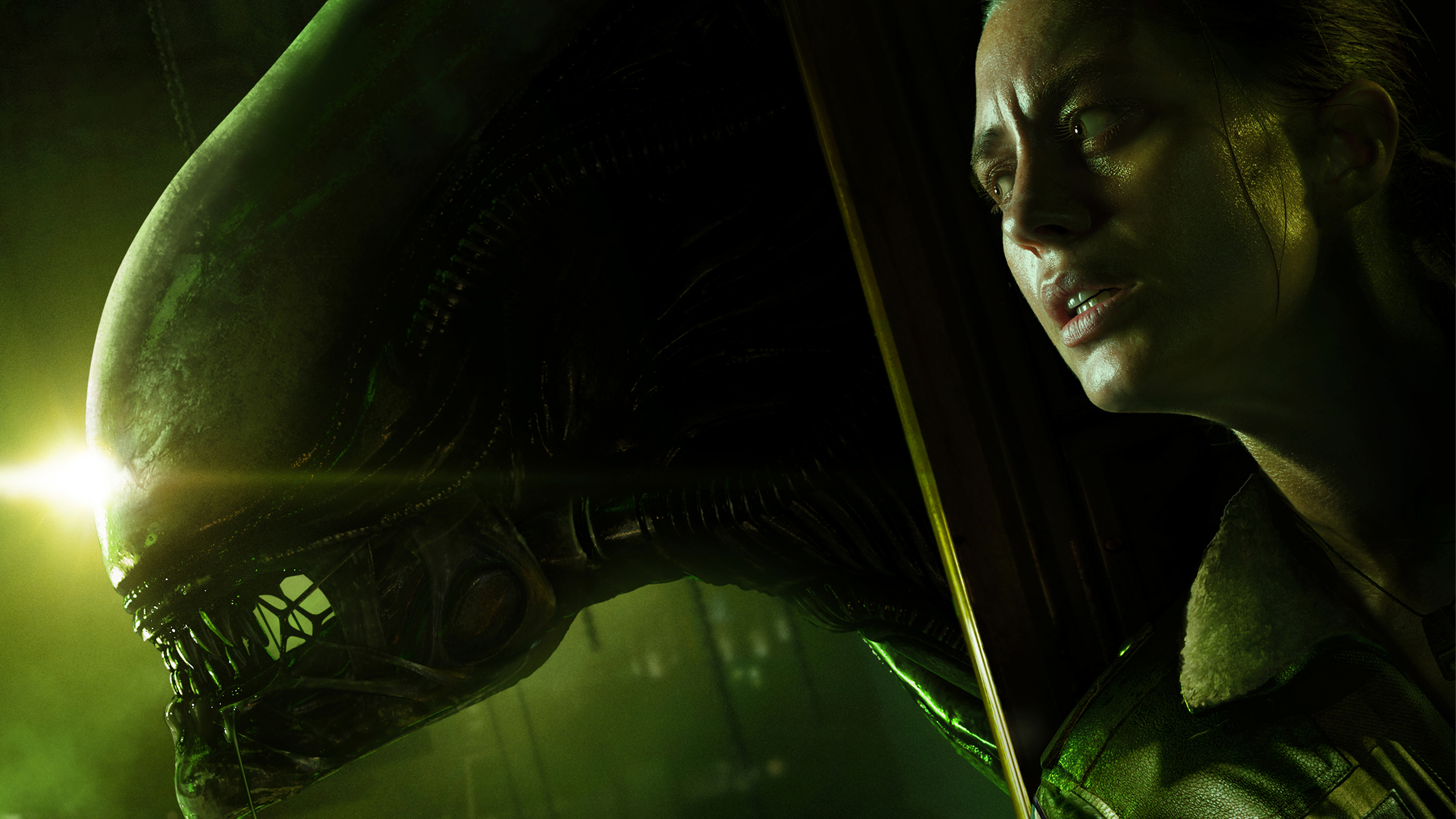
In 2010, a group of hardcore Alien fans at Creative Assembly were given the opportunity of a lifetime: making a game set in that iconic sci-fi universe, with the full blessing of 20th Century Fox. This wasn’t some non-canon spin-off, but a legitimate part of the Alien series. And the result is one of the best horror games, and one the most faithful film adaptations, ever made.
Beginnings
Most Alien games use James Cameron’s action-packed sequel, Aliens, as a creative touchstone—for obvious reasons. But the Creative Assembly team immersed itself in Ridley Scott's 1979 original instead. "From the moment we pitched the original concept, Fox was completely behind us," says Alistair Hope, Isolation's creative lead. "I think because we were trying to stay true in spirit to the original, they felt like the property was in safe hands."
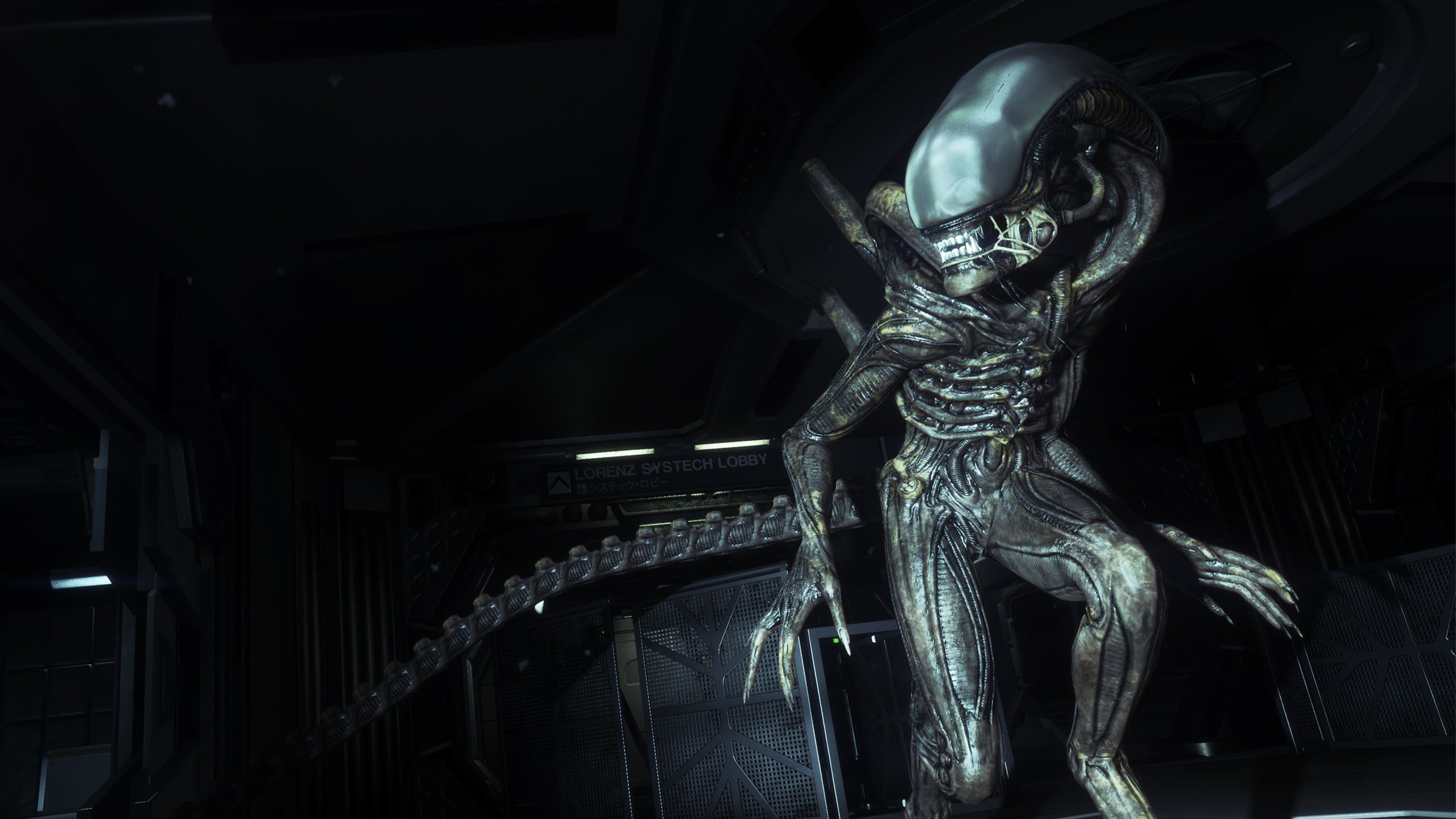
Fox supplied the team with an enormous archive of production material, some of which has never been publicly released. "It was like that moment in Pulp Fiction where they open the suitcase," says Hope. "We were stunned that all this stuff existed. For them to be able to drop that amount of material on us was great. It gave us a really good insight into how that first film was made." The archive contained design blueprints, continuity Polaroids, costume photography, concept art, and thousands of photos of the sets.
"As fans we would have said 'Yeah, we know what these costumes look like.' But it wasn’t until we got the archive that we could really look at the details. We deconstructed them and tried to put that level of detail, care, and attention into our costumes. We learned early on that you really need to study the source material. You think you know it inside out, but it’s not until you actually investigate closely that you get a full understanding."
Total immersion
During development, Creative Assembly watched Alien countless times, which is evident when you play it. Every element, from the level and sound design, to the retro-futuristic UI, feels like it belongs in the same universe.
"When we first mentioned that we had the film running on loop during initial press for the game, I think everyone thought we were talking BS," says UI lead Jon McKellan. "But It's 100% true. It genuinely was running on screens in the studio 24/7. For a long time I was sitting next to one of the big screens that had it on. It was on loop, and over a 8-10 day shift I would have it in my peripheral vision running 4 times a day for over 4 years."
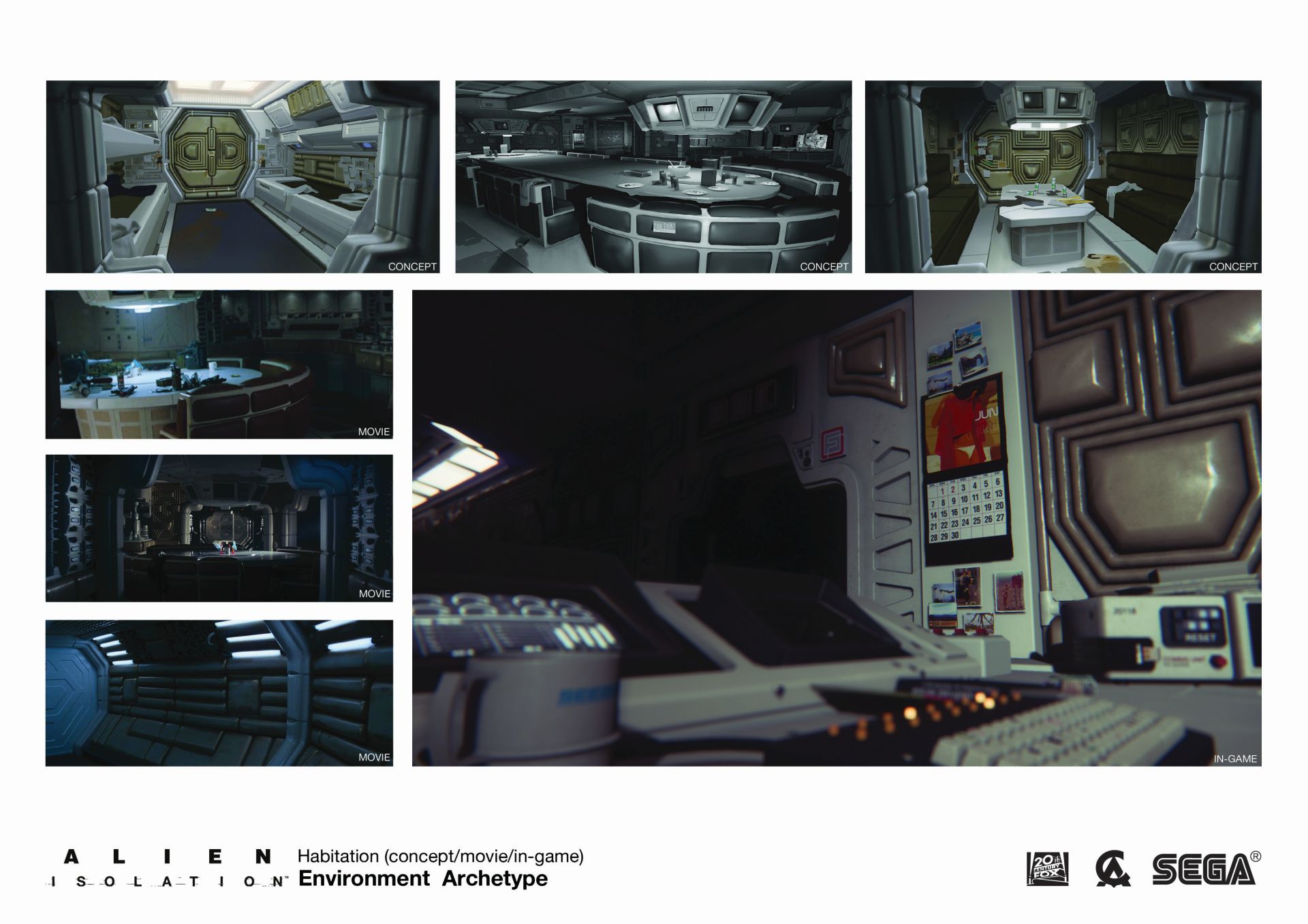
I'd record UI elements onto old beaten VHS tapes, deliberately magnetise the screen and the cables, and just destroy things
Jon McKellan
"I was fully immersed in Alien and deliberately didn't watch the other films during that time. The look of Alien and Aliens is remarkably different, and it's easy to muddle them in your mind and end up creating assets and looks that are a jumble of 'the franchise' and that's not what I wanted to make."
The biggest gaming news, reviews and hardware deals
Keep up to date with the most important stories and the best deals, as picked by the PC Gamer team.
Isolation’s UI is one of its defining features, and McKellan went to great lengths to make sure it had an authentically analogue, retro feel. "I'd record UI elements onto old beaten VHS tapes, deliberately magnetise the screen and the cables, and just destroy things whilst playing the recorded footage back on screen. As well as being 100% authentic, the effects you could achieve were more varied than what any of the previous software-driven tests achieved, and generated effects you would never really have thought of manually authoring."

McKellan also had to reverse engineer the UI elements from the film to make them usable in the game. "At first glance I felt I had an easy job ahead of me, because there was so much reference material available to draw from," he says. "But when you dig down into that film you notice things, design oddities, that make it really hard to translate to a videogame."
"Excluding the MU-TH-UR computer interface, no other screen on the Nostromo is interactive. No mouse, no input. Everything is a readout or a gauge. So for a videogame full of UI-driven interactions, nothing in the film had any interaction reference. In the end it was more about taking that aesthetic and building our own visual language from it: how text is used, style, colour, borders and so on, and weaving that into original, interactive interfaces."
Used universe
Isolation’s art design is one of its most recognisable features, perfectly capturing the look and feel of the movie. Rather than go for a shiny, optimistic vision of the future, the artists created a lo-fi, gritty, and realistic sci-fi world, directly informed by the production design of the film. "This was absolutely core," says Hope. "From day one, that was what we were going to do. We’ve always been massive fans of the first film, and this all came about because it felt like no one had ever created that experience in a game. It looks awesome. It’s really beautifully realised and considered. It’s very believable, and that’s one of the great things about that film. It’s very credible, even now."
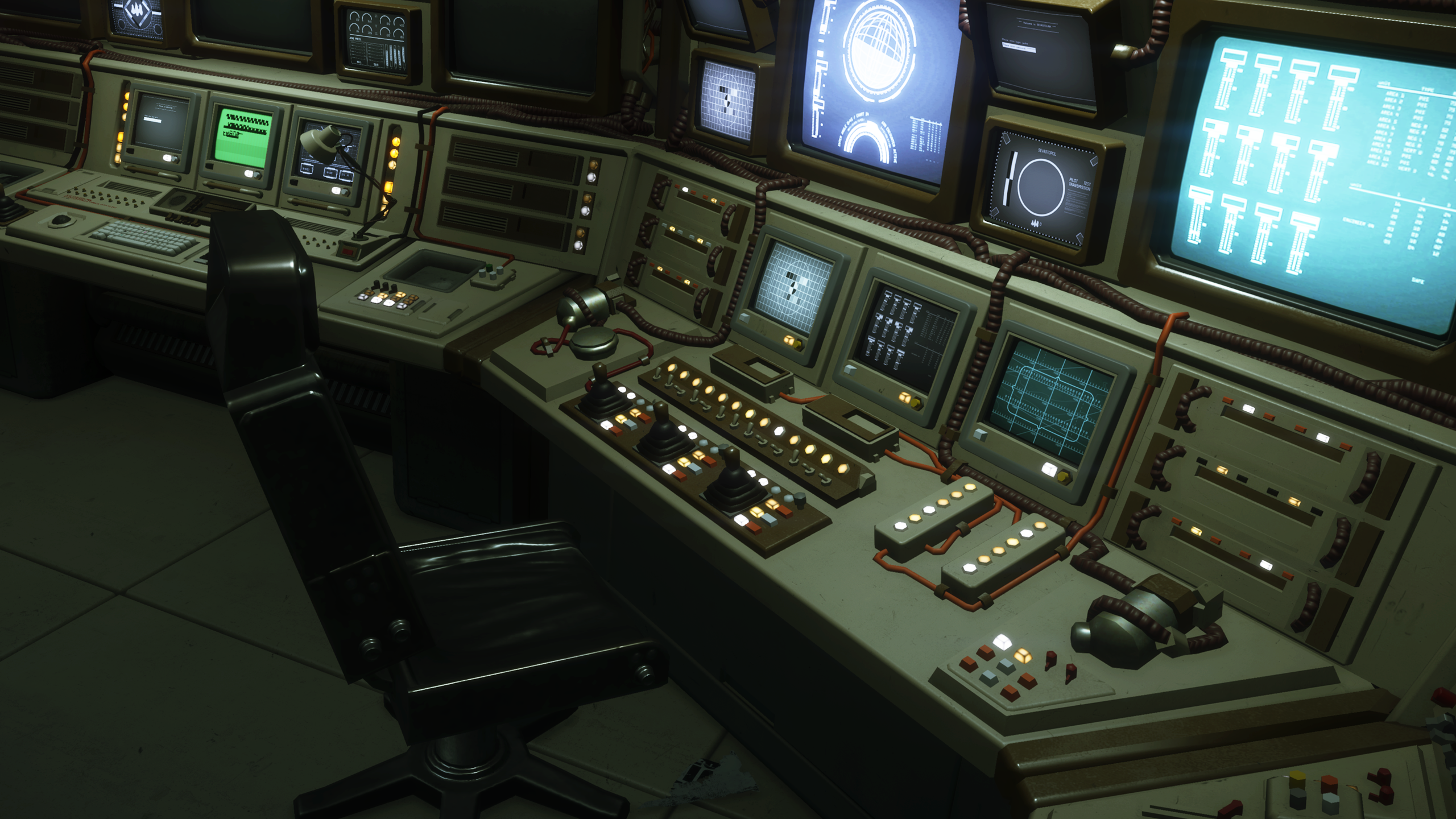
Hope describes Isolation’s future as mundane and grounded in reality, and says that this helps to support the horror. "Even though this is the future, it’s not technology that’s going to help you survive this alien creature. When you watch Alien, there’s no sense that there’s a locker somewhere with a big gun that’s going to be the answer to the crew’s problems. Despite all this technology, it’s really about using your instincts to stay alive."
Building better worlds
Designer Catherine Woolley had to consider this understated, realistic design philosophy when creating the game’s levels. "From the beginning we were working together to decide on spaces that we felt would fit on the station," she says. "While also creating interesting and engaging spaces, keeping it as real as possible, and considering everything that will give it that feel we were striving for. This gave us a lot of freedom, but we of course still wanted to ground it to feel as close to the existing Alien universe as possible, while adding in our own creations. It helped that Dion Lay, one of the writers, was engaged with the art and design teams to ensure the environments told a story."
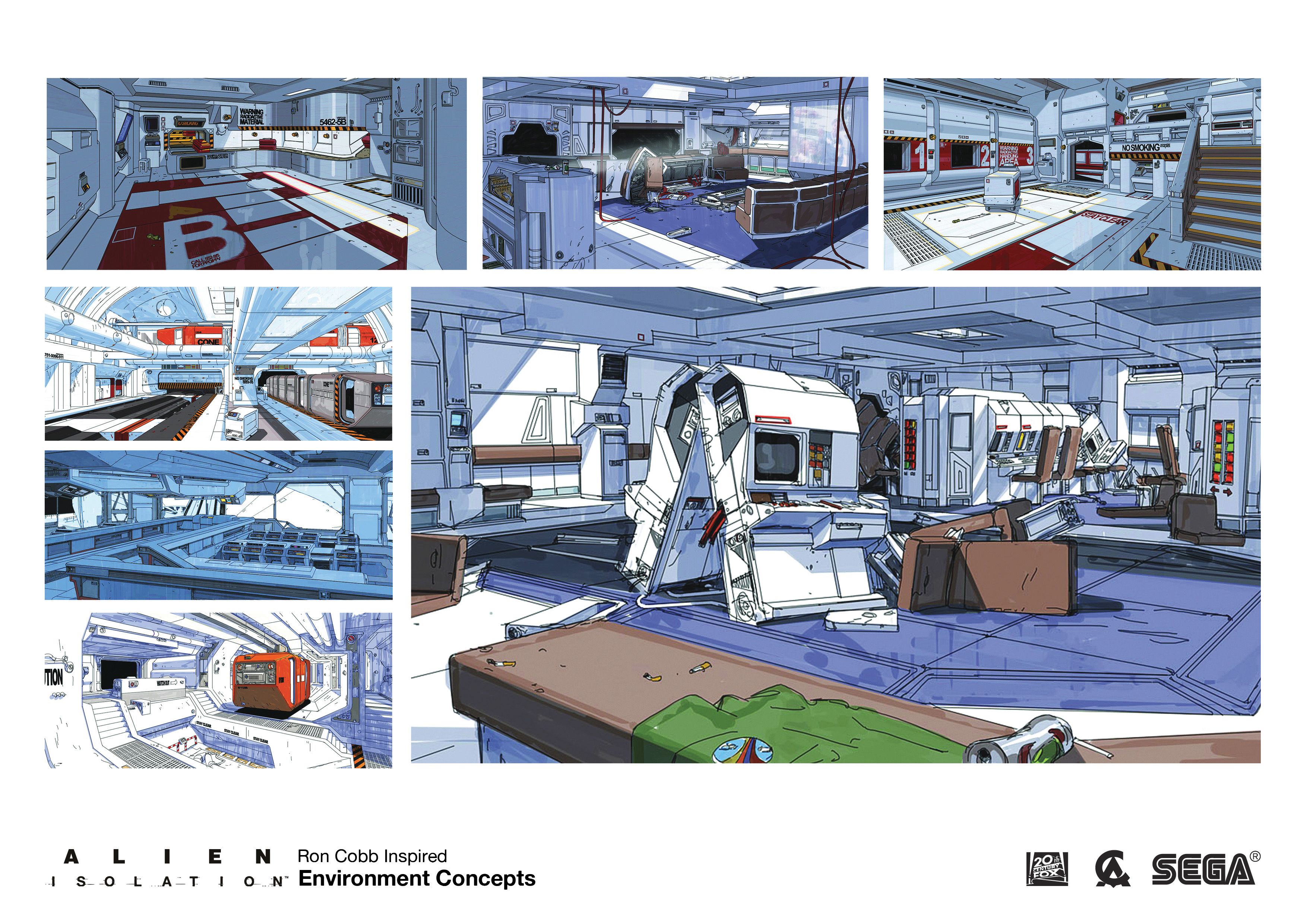
It was also important for Sevastopol to be a fun play space as well as a believable world. Woolley was heavily involved in The Quarantine, the first time Amanda meets the alien. "From playing the level we realised we had some boxes to tick," she says. "Not trapping the player in a scenario they can't escape from was a must. If they accidentally trap themselves in a room, it won't be a fun experience. So when designing a space we had to ensure that there were multiple exits from rooms, be it a door or a vent. And, of course, places to hide."
Despite all this technology, it’s really about using your instincts to stay alive
Alistair Hope
"These checks also fed into the core level design, as we needed to add many different ways around the space so the player could use another route when they needed to escape the alien. This meant ensuring we had plenty of routes and corridors off the main path and secondary rooms that added story, gave you a breather, or an alternative way to move through the level. Vent systems were also massively important here, not only to create a route that was different to the others, but also because they were ways for the alien to move around too."
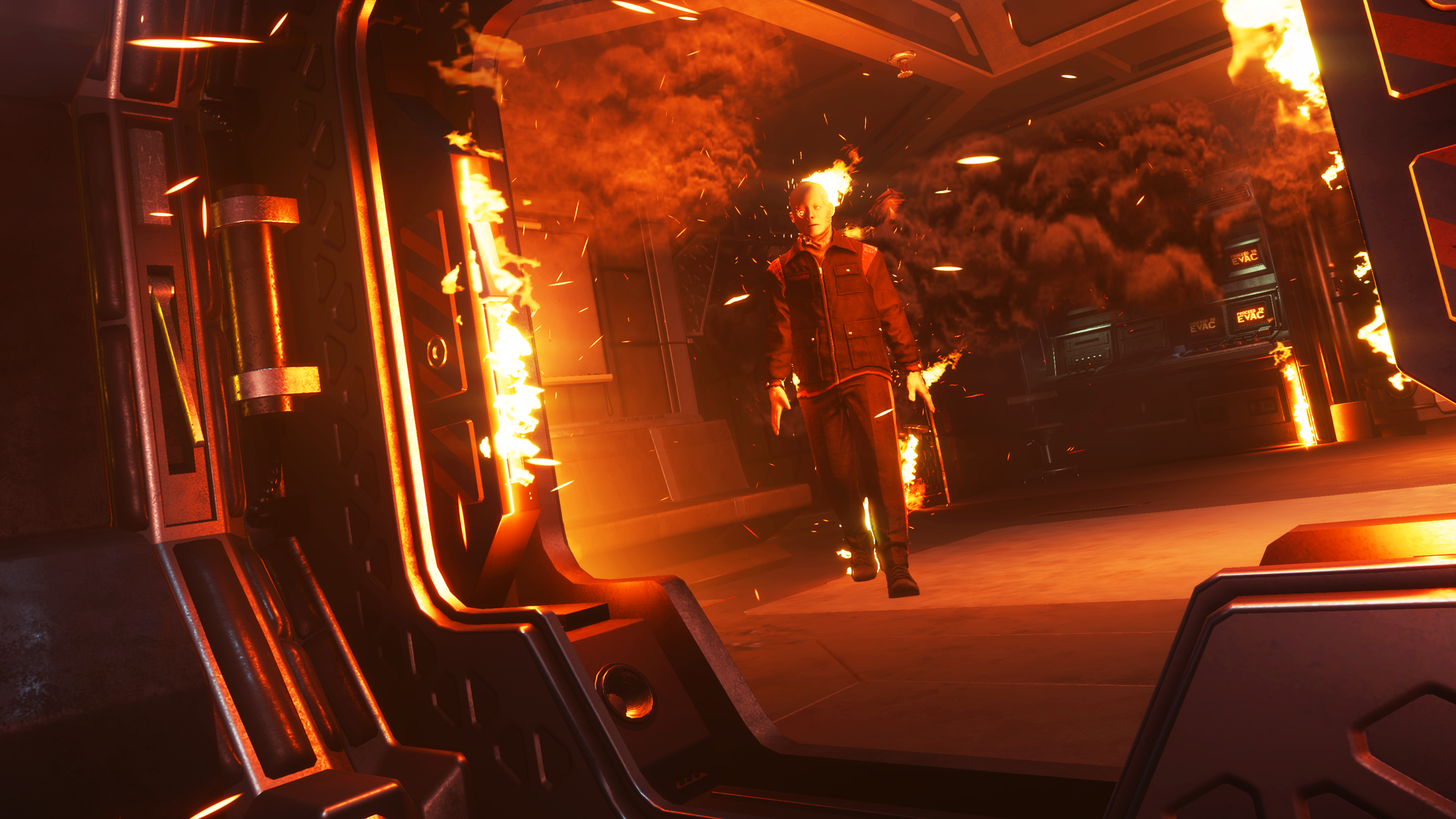
Woolley also watched Alien more times than she can remember, which directly informed the design of the game’s levels. "As well as it playing on screens in the studio all day, I'd watch it frequently in the evenings at home. When we were designing Sevastopol station we had five distinct archetypes that we followed, which mirror the different areas of the Nostromo: habitation, science, medical, engineering, and technical. These visually distinct themes were our starting point whenever we were creating levels for the game."
Lone survivor
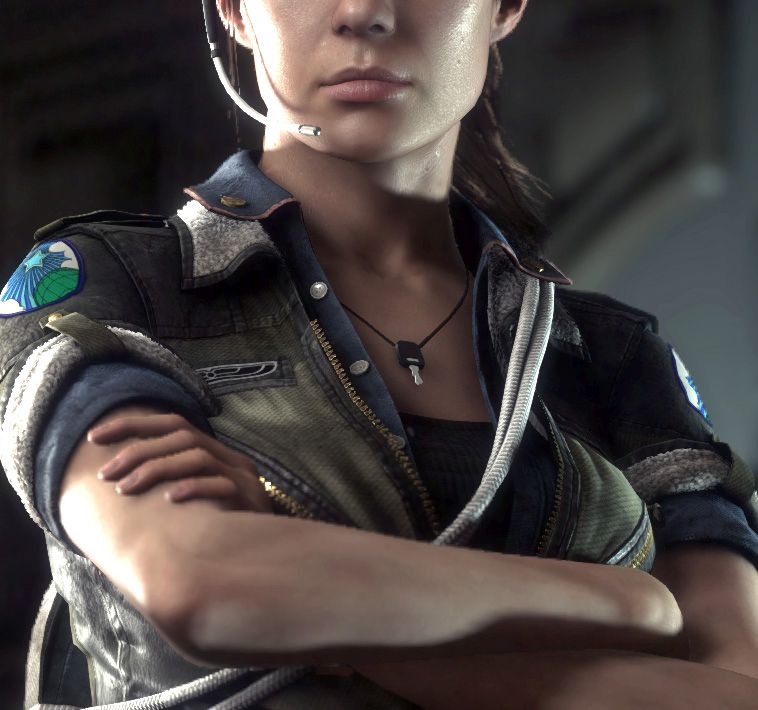
Look closely at the character model for Amanda and you'll see a key around her neck. It looks like it’s from a filing cabinet or a lockbox, but this is the future, so it could be anything. It's never addressed in the game, or in any of the DLC. I ask Hope to shed some light on it and he's reluctant to answer. "I don't think we need to explain everything," he says after a long pause.
Survival is one of the things that makes Isolation distinct from pretty much every other Alien game, but there was a greater focus on weapons early in its development. Crafting weapons was a planned feature, and concept art illustrating how this might have worked was created. But the idea was eventually discarded. "We thought about what people would want to do in order to survive," says Hope. "We explored different ideas, and one of them was fashioning weapons to defend yourself. That was quite early on, but then we realised that this game isn’t really about pulling the trigger."
Even though it was cut, Hope says this was an important experiment. Trying things like this made them realise that the core survival concept was powerful enough to stand on its own. As well as crafting, they also experimented with different camera perspectives. "At one point we were exploring a third-person camera. It was interesting, but it was a different experience. We preferred the immediacy and intimacy of first-person. In third-person it became a game about jockeying the camera and looking after your avatar. But in first-person it’s you that’s being hunted. If you’re hiding behind an object and you want to get a better view of your surroundings, you have to move."
Field test
To imagine what it would be like to actually have an alien hunting you, Creative Assembly used the surroundings of their Horsham studio as a starting point. "At the very beginning, we thought about what it would be like to encounter and survive against that original alien," says Hope. "If we released one in the studio, what would we do? That was a really interesting exercise."

"No one said they were going to find a big laser gun and shoot the thing dead, because that wasn’t part of the universe we were playing in. It wasn’t about using strength or technology, but real-world instincts and experiences to help you survive. Some people said they would probably pick something up and throw it to distract it, and we wanted to bring that instinctive desire to manipulate the world and change the odds into the game’s systems."
One thing that was notably missing from the game was the alien’s famously corrosive and dangerous acid blood, which in the films can melt through solid metal like polystyrene. "We had some cool ideas around it," says Hope. "But ultimately it felt like we were starting to make an alien simulator, rather than something that would be a fun experience to play. Having holes appearing in the world started steering the game in a weird direction, and so it seemed like it would be a better idea not to make a feature of it."
Distress call
The game sticks remarkably close to the film—sometimes to the point that story moments feel a little too obviously signposted. But this was partly intentional. "We wanted to tell a story that was really closely associated with that first film," says Hope. "Amanda being Ripley’s daughter, the Nostromo’s flight recorder, positioning the story to take place fifteen years later."
One standout chapter, titled Beacon, sees you switching roles to play as Marlow, a scavenger who ends up on LV-426, tracking the same mysterious radio signal the Nostromo did in the films. This gives you a chance to see the derelict ship up close, and is a real treat for Alien fans. "We thought that if you’re going to put an alien on a remote space station, you need to explain how it got there. Having Marlow and his crew visit the planet and rediscover the derelict did exactly that, and just seemed like too good an opportunity to miss."
We had five distinct archetypes that we followed, which mirror the different areas of the Nostromo: habitation, science, medical, engineering, and technical
Catherine Woolley
Then the game throws its biggest, scariest surprise at you: two aliens. I ask Hope why they decided to do this, after marketing the game so heavily as starring just one. "We wanted to turn the tables on you a little bit. If you’re starting to feel a bit more confident around the alien at that point, we make things doubly worse. I did wonder what the response was going to be."

They always intended to introduce another alien, and built the AI around having two of them working in unison. "They’re gonna kill me for saying this, but it was as easy as just placing another alien in the level. But only because they did such a good job with this creature that can look after itself." The reveal that there are multiple aliens on Sevastopol made me wonder if all the encounters preceding it were with different creatures, rather than just one. "I’m happy for players to interpret that for themselves," says Hope. "No one on Sevastopol knows all the answers. Amanda doesn’t, and neither does the player."
"Over the course of the development, the thing I really didn’t expect was the fact that, as a team, we’d all still be getting caught out by the alien. Even towards the end of development we’d still die and jump and yell and be surprised by it. Even now I can play it and my heart will be thumping away."
Artificial persons
One of the most surprising things about Isolation is how its synthetic enemies, the Working Joes, are often just as scary as the alien. Their dead eyes, rubbery skin, monotone voices, and the way they march slowly towards you is genuinely nerve-racking. I ask Catherine Woolley, who worked on levels with a heavy focus on the Working Joes, about the idea behind their design.
"We knew players couldn't be up against the alien for the entire duration of the game," she says. "That would be way too stressful. So we added the Working Joes to the game. They were designed to be as unpredictable as the alien, rarely following a prescribed route, but not nearly as lethal. They were a middle difficulty in terms of enemies. A tougher opponent compared to humans, but with a slow walking speed being their main weakness."
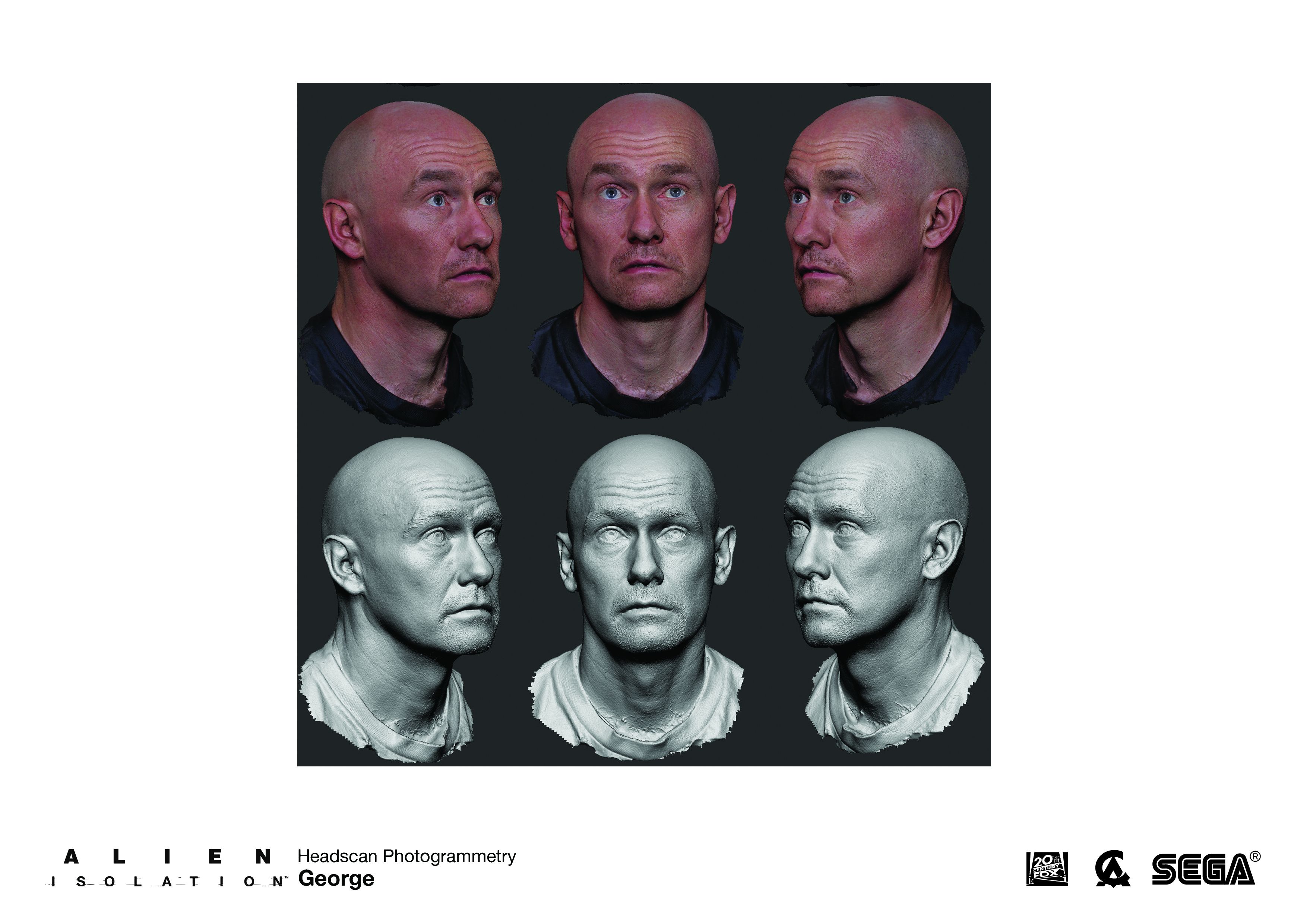
"Early on they all shared a human-looking face," she adds. "But it was too easy to confuse humans and synthetics in stressful situations, which is when we moved over to the creepy synthetic look that became their signature. Also, by creating these less human-like synthetics we could then have them inform the player of changes in gameplay, like the colour of their eyes turning red to let you know that they're about to attack."
Class reunion
As if delving into that priceless archive wasn’t enough, Isolation also gave Creative Assembly the chance to work with, and even write new dialogue for, the original cast. This started with their reconstruction of the Nostromo. "When you start a project like this you have all kinds of crazy ideas," says Hope. "Because the first stage of dev was deconstruction of the film, our creative team was tearing the Nostromo apart to find out what makes it feel like the Nostromo. This was so we could build new environments that were true to that style."
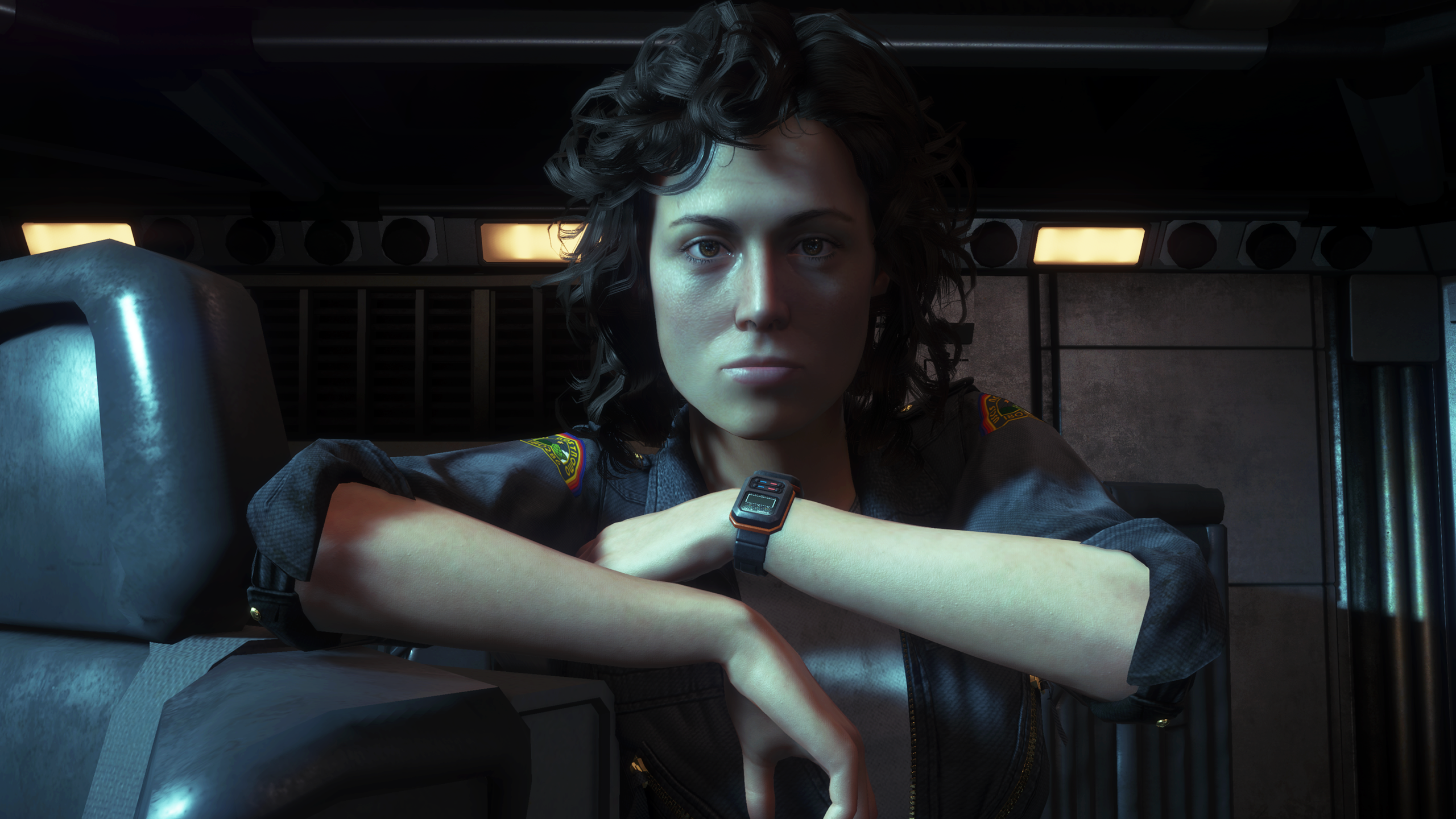
"Then we ended up thinking, man, I'd love to walk around the Nostromo. Then you wonder what it would be like to face the original alien there. Then you wonder if you can get the original cast together to reprise their roles and play out some of those scenarios again—which we did. We told them the game was about survival, not killing. They saw the care we put into the atmosphere. It was really exciting that they said yes. Sigourney Weaver would be playing Ripley for the first time in a videogame. That was really special."
Hope says the actors had ideas about the script and their characters—especially Weaver. The character of Ellen Ripley has been an important part of her career, and she doesn’t treat the character lightly. In the later films she had input into the character few actors are afforded. "We really got a sense of that," says Hope. "She did a lot of work reprising her role."
It was definitely a dream game to have worked on. The young me would have been so proud!
Catherine Woolley
Isolation's Nostromo is remarkably detailed, and holding them up side by side, there are only a few minor differences. It’s one of the most lavishly recreated film sets I’ve seen in a game, and getting a chance to explore that iconic location is a thrill for a fan of the film. The ship appears in Last Survivor and Crew Expendable, two short DLC missions that recreate dramatic scenes from the movie.
Making history
Today, many fans (myself included) consider Isolation to be one of the best entries in the entire Alien series. I ask the developers how they feel about this and how the game’s reception has affected them.
"It's actually really bittersweet," says Jon Jon McKellan. "I genuinely feel humbled to have played any sort of part in the franchise, especially one that did well. When I was designing the intro title sequence, and later the final message to Amanda scene, working with our new Sigourney Weaver dialogue recordings, it was a giddy, exhausting, intense time."

"I had experienced nothing quite like it, and I doubt I ever will again. I'd watched this film countless times before ever thinking I'd work on the franchise, and here we were as a team, making this new, weird, intense experience for years. For people to respond to it so well, and legitimise it as a genuine, canonical chapter in the Alien saga... yeah, it's hard to get your head around."
"It honestly feels amazing," says Catherine Woolley. "I love this game so much. The team put its collective heart and soul into it, and I know we're all so happy that it was as well received as it was. It was definitely a dream game to have worked on. The young me would have been so proud! When fans put it up against the films and say it's a great example within the Alien series, they’re making the developers very happy indeed."
Isolation goes against everything that typically defines a mainstream, big budget release, focusing on steady pacing, artful world-building, and dynamic, interesting systems, rather than something broad and instantly gratifying. “Making the game did feel like a risk," says Alistair Hope. "But when we first pitched it, the response was really positive. It seemed to be in line with what we all wanted from an Alien game. Something different. It's great to see there's a large audience out there that’s open to something like this."
If it’s set in space, Andy will probably write about it. He loves sci-fi, adventure games, taking screenshots, Twin Peaks, weird sims, Alien: Isolation, and anything with a good story.


